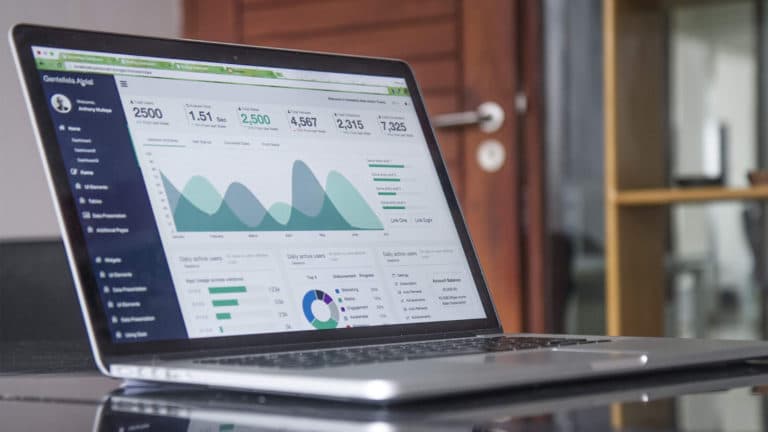When most brands think of B2B content marketing, they only usually think of the content creation and publishing phases.
That’s why most brands don’t get the best results from their content marketing.
Clicking publish on a piece of content is not the end of the content marketing journey. Instead, it’s just the beginning of another equally important stage — content promotion.
That’s why you need an effective B2B content promotion strategy.
How a Promotion Strategy Supercharges Your B2B Content Marketing Strategy
Investing a lot of time and other resources in creating an exceptional piece of content won’t do you any good if your audience can’t find it.
To ensure your efforts don’t go to waste, you must include a B2B content promotion strategy as you design your overall content marketing strategy.
What is a content promotion strategy?
A B2B content promotion strategy is a document that helps guide your brand on how to distribute your content effectively. This will help supercharge your content marketing strategy by:
- Bringing your content to the right audience
- Driving relevant traffic
- Helping generate qualified leads
The truth of the matter is that without promotion, your content marketing efforts won’t bear much fruit. No matter how amazing your content is, if it’s not presented to the right audience, it won’t help you achieve your business goals.
How to Determine Which Channels You Should Use to Distribute Your Content
With so many channels available for content distribution (and more popping up each day), it can be challenging to know which ones to focus on. Fortunately, there are a few ways you can ascertain the right channels for your brand.
1. Research Your Target Audience
The main aim of B2B content promotion is to get the right eyes on your content. For that to happen, you need to understand your target audience. But, more importantly, you must know their favorite sources of getting information.
You need to know where your target audience prefers to hang out online.
This is one of the most critical steps of creating your content distribution strategy as it determines where you will focus your energy.
2. Talk to Your Customers
Your customers are a goldmine of marketing data waiting to be explored. One area they prove invaluable in is helping you determine which content promotion channels to invest in.
All you have to do is ask.
You can create a survey design to get information on which platforms they frequent the most to get your customers’ input.
3. Is Data Analysis Easy on that Platform?
Data plays a critical role in many areas of B2B marketing. For one, it helps you know whether your strategy is working or not. It also helps inform your decisions on which steps to take next. That’s why, when choosing a channel for your content distribution, you must prioritize those that make it easy to track your important metrics.
4. Do the Rules of Engagement Suit Your Needs
Each content promotion channel has specific rules guiding how brands communicate with their audiences. Make sure your platform of choice gives you the liberty to communicate your marketing messaging with your audience effectively.
On the same note, you need to ensure your content promotion channel of choice suits your brand’s tone, voice, and style. Some platforms might permit conversations of a sensitive nature that could put your brand in disrepute. So, make sure to understand each platform well before using it to promote your content.
Top Channels for Promoting Your Content
One of the biggest mistakes brands make with content distribution is thinking they’ll get better results by posting their content everywhere. The truth is that you just need to focus on the top channels that yield the best results. So let’s briefly dive into some of the top ones for distributing B2B content.
Social Bookmarking Sites
One of the best strategies to promote your content is to submit it to social bookmarking sites.
Bookmarking sites allow users to save and share website links with their network. A great advantage of bookmarks is they’re often tagged, making it easy for users to search for saved bookmarks by topic. Examples of popular social bookmarking sites include:
But getting your content on top bookmarking sites in your industry, and managing your precedence there, can be pretty overwhelming. That’s why you must leverage tools like OnlyWire to automate your social bookmarking submissions.
Advantages of leveraging social bookmarking sites for marketers include:
- Brand awareness: Gives you access to a broader audience as more people are likely to see your content.
- Boosts SEO: Bookmarking sites are a great way of getting backlinks to your site and driving more traffic.
- Can help speed up website indexing: Because most social bookmarking sites have higher domain authority (DA) and are constantly updating their content, they get crawled faster and more regularly by search engines. This can also lead to your links being discovered, crawled, and indexed faster.
As you can see, using social bookmarking sites is one content promotion strategy you should consider as a B2B marketer. They make it easier for you to reach your target audience, even if you’re in a niche audience.
Social Media
Another great B2B content promotion channel is social media. This may be quite obvious. However, you’d be surprised at the number of B2B brands that shun social media. However, the truth of the matter is that B2B buyers are human beings too. And whether for personal or professional use, they visit social media platforms.
This is why social media must be one of your primary content promotion channels. That’s especially as research shows that 89% of marketers regard social media as their top content promotion channel.
The best part about social media is that it allows you to promote content created specifically for that platform or reformatted content from your website. Some of the most effective social media platforms for B2B content promotion include:
LinkedIn is the best social media platform for distributing B2B content. One reason for that is that 4 out of 5 LinkedIn users drive business decisions. Also, LinkedIn has been proven to generate 3x more conversions than other social media juggernauts like Facebook and Twitter.
For every data-drivenB2B marketer, LinkedIn is a goldmine waiting to be tapped. You must leverage the platform for B2B content promotion and your social selling strategy.
Twitter is another social media platform you must invest in for your B2B content promotion. While the platform is not designed for long-form content, it does one thing very well — sparking conversations. And that’s why the platform is excellent for building a community that you can leverage to promote your content. Besides sharing your content yourself, you can also encourage your community and website visitors to help you promote your content.
Thankfully, you don’t have to be on Twitter 24/7 to reap the fruits of your content promotion. You can automate the process by using tools like Click to Tweet that enable readers to share excerpts of your content.
With over 2.91 billion active monthly users, Facebook is one social media platform you dare not ignore. Yes, even for B2B content promotion.
One of the main reasons Facebook is such an excellent content promotion tool for B2B brands is that the platform offers versatility in the type of content you can post. For example, you can use:
- Text
- Visuals (images, video, GIFs)
- Infographics
- Live video (Facebook Live)
- User-generated content
Facebook is an excellent platform for driving brand awareness if used properly. For example, you can leverage your personal profile to post status updates. You can also use your company page to post promotional content.
The key to winning on social media is to be present. You must engage with your audience, not just on your posts but on posts they create too.
I know what you’re thinking.
You don’t have the bandwidth to be on social media all day.
The good news is — you don’t. All you need is a social media management platform like Hootsuite. Hootsuite is a platform that allows users to manage their different social media accounts from a single dashboard.
Paid Sites
While you can effectively promote your content organically (without paying), you shouldn’t ignore paid B2B content promotion channels. Besides faster results, paid content promotion has the advantages of: helping you reach a wider audience. It also helps you target a specific buyer persona type or ideal customer profile (ICP).
There are a number of channels you can use for paid content promotion. Some of the most effective ones for B2B brands include:
When it comes to paid content promotion, you usually have three channels to leverage:
Paid Ads
Paying to get your content displayed on different platforms is one of the fastest ways to generate traffic and boost brand awareness. Examples of paid ads you can use include:
- Promoting your content on search engines
- Paying for ad space on relevant websites
- Running ads on social media
If you’re looking to get as many eyes as possible on your content in the shortest possible time, paid ads are the best way to go.
Sponsored Content
Sponsored content refers to the content you create to publish on other sites at a fee. For this strategy to work, the sites you target must ensure your target sites:
- Attract relevant traffic
- Drive high traffic
- Have high engagement rates
Particularly if you target niche-specific sites, sponsored content is an excellent way of driving qualified traffic to your site or product.
Paid Influencer Content
Another paid avenue for B2B content promotion is leveraging influencer marketing. FYI, paid influencer content is content created by, or in conjunction with an influencer. This form of content distribution is powerful because it’s a powerful form of word-of-mouth marketing. It’s also an excellent way to establish social proof. Both are essential in gaining trust, especially when reaching new audiences.
Again, it’s essential that your influencer of choice be relevant to your industry and product.
Leveraging paid sites is a powerful way of amplifying your content and ensuring it reaches your target audience. Examples of platforms you can use to execute paid content promotion include:
Another powerful B2B content promotion channel you must add to your distribution strategy is email. While email may be one of the oldest electronic channels of communication, it’s still as effective as newer channels like social media.
One reason email is so powerful is that it helps you promote your content to people who care. As a result, engagement and conversion rates are higher for email campaigns than on other platforms. For this strategy to work effectively, you must build an email list. You can do this by using tools like OptinMonster to create optimized opt-in forms on your website. You can also create and promote a lead magnet to build an email list.
Besides promoting your content to your email list, you can also run email outreach campaigns. This is where you find brand representatives and bloggers that could benefit from your content. Find their email addresses and send them relevant content.
For both approaches to work:
- Personalize your emails
- Make sure to target the right people
- Don’t be shy to follow up
While distributing content using email may be laborious, it’s manageable if you use automation tools.
Syndication Platforms
Content syndication is the practice of having your already published content re-published on another site. Some of the most popular content syndication websites for B2B brands include:
One of the biggest advantages of content syndication is that it can lead to massive exposure for your content. With more people seeing your content, you can only expect an uptick in traffic to your site.
Another benefit of syndicating your content is it also helps your SEO. This is because every time you syndicate content, you get a link back to your site. As a result, your domain authority (DA) increases.
Despite the massive benefits of content syndication, there is one caveat — search engines may rank the syndicated post higher than the original post. If you published the original post on your website, that could mean losing out on search engine traffic. This ultimately means if your blog is still new, try and build up your DA first before relying on content syndication platforms for traffic.
Link Roundups
Another underutilized B2B content promotion strategy you must consider is participating in link roundups.
Link roundups are weekly, daily, or monthly curated lists of the best content in a particular industry. A lot of blogs curate their favorite content from the web as a way of adding more value to their website. Getting your content featured is a fantastic way of promoting it to an audience you would otherwise not have access to.
Here are a few examples of link roundups:
- Crowd Springs Twitter Link Roundup
- Wix Roundup of Tools for Small Business Owners
- Real Capital – Content Marketing News Roundup
Like content syndication, getting featured on a link roundup has the benefits of:
- Boosting brand awareness
- Driving traffic
- Generate backlinks
How do you get featured on link roundups?
The best way to participate in link roundups is to reach out to bloggers in your niche manually. Another way is to join link roundup groups on channels like Slack, Facebook, e.t.c.
3 Tips for Repurposing Your Content for Different Channels
Now that you’ve seen the popular B2B content promotion channels, you’ve probably realized that each channel favors content in a specific format. To ensure your content promotion is effective, you must repurpose your content for each of the platforms you want to leverage.
What is content repurposing?
Repurposing content is more than just copying your content from one platform (your website) to other platforms like social media. Smart and effective content repurposing involves transforming a piece of content into a format you can use on another platform. It also involves adding more value so as to reinforce the messaging in the piece of content.
So how do you effectively repurpose content for maximum impact?
Here are a few tips to help you do just that:
1. Decide Which Content You’ll Repurpose
One of the first steps to repurposing content is deciding which content to repurpose. To answer this question, you must:
- Understand your goals: Knowing what you want to achieve with your content is key to helping you know which content to repurpose and what formats to repurpose it in.
- Audit your content: Repurpose content that has performed well as it’s more likely to perform well when repurposed.
- Focus on evergreen content: The beauty of evergreen content is that once you repurpose it, you can use it forever.
- Let customer feedback guide you: Take note of what your customers or website visitors are saying about particular topics, features, or weaknesses. This will give you an idea of the content to repurpose.
- Research your competitors: An easy way of getting an idea of what content to repurpose is to check what your competitors are repurposing and what’s working for them.
2. Know Which Content Formats Work for Your Target Audience
When repurposing content, your audience must always come first. That’s why you must know which content formats they prefer. Examples of the formats you can repurpose your content into include:
Slide Decks
Slide decks are a popular content format because they make it easy to digest content. Breaking up a blog post into a slide deck is, therefore, an excellent way of repurposing your content.
For better brand recognition, use branded templates. Templates also help you create your slide decks much faster. Once you’ve created your slide deck, you can boost its exposure by submitting it to sites like:
Video
People love video content as it’s more interactive than static content formats like text-based blog posts. Thanks to advancements in technology, creating a video has become super easy. All you need is a smartphone if you’re recording or an animation tool if not. Besides, repurposing a blog post or slide deck is easy as you already have most of the information you need for your script. Once you’ve created your video, you can distribute it by submitting it to sites like, among others:
Podcasts
The demand for audio content has skyrocketed. Studies show that 55% of Americans 12 and older listen to podcasts. That’s why your content repurposing strategy must include podcasting. You should consider repurposing content like blog posts and videos into podcasts. Once that is done, you can promote your podcasts on platforms like:
PDFs
PDFs are still an excellent content format, especially for that segment of your audience that prefers text to video or audio content. Again, there are many platforms and services you can use to convert your content into PDFs. A great example is PrintFriendly.com, an app that easily turns blog posts into PDFs. You can promote your PDFs on several platforms that include:
Infographics
Infographics are another excellent content format that can help you get your message across easily. That’s why most people love them. And that’s why you must consider repurposing some of your content into infographic content. Thankfully, you don’t have to be a graphic designer to create powerful infographics. You can use tools like Easel.ly, Infogr.am, Piktochart, and others. Once you’ve created your infographic, you can distribute it on platforms like:
3. Have a Plan
Never repurpose content just for the sake of repurposing it. You must have a strategy for repurposing your content and distributing it. Your plan must include:
- The content you’re repurposing
- Top formats to repurpose into
- A publishing calendar
- Platforms you’ll distribute repurposed content on
- KPIs for tracking performance
Never treat content repurposing as a lesser form of content marketing. Executed well, your repurposed content could bring you more traffic than the original content.
B2B Content Promotion — A Critical Component of Your B2B Content Marketing Strategy
Without content promotion, your content marketing strategy will be ineffectual. If your content is to bring in leads or convert leads into customers, you need to ensure the right people see it.
That’s why B2B content promotion is a critical component of your overall marketing strategy.
Invest time, resources, and effort into crafting your content distribution and promotion strategy and your content will give you a better return on investment.
What if you don’t have the bandwidth to create and promote content for your brand?
We can help you with that.
Reach out to us for our B2B content marketing services and we’ll help you leverage the power of content to grow your brand.
So, go ahead and get in touch.













